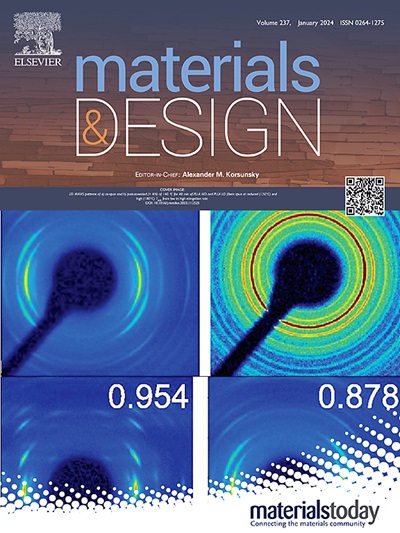Influence of melting mode on melt pool dynamics and microstructure in WE43 Mg alloy: A combined computational and experimental approach
IF 7.6
2区 材料科学
Q1 MATERIALS SCIENCE, MULTIDISCIPLINARY
引用次数: 0
Abstract
In this study, laser-material interactions during laser-powder bed fusion of WE43 magnesium alloy were characterized through numerical and experimental analyses. Various melting modes (i.e., conduction, transition, and keyhole) were induced through deposition of laser tracks at powers ranging from 80 to 130 W, and used as input parameters for a thermo-fluid model. Results of microscopy demonstrated good agreement between numerical and experimental measurements of melt pool depth, as well as a strong correlation between melt pool microstructure and the thermo-fluid conditions predicted by the model. Specifically, for conduction mode at 80 W, a predominance of cellular subgrains within the melt pool was consistent with the predicted steep thermal gradients, while for keyhole mode at 130 W, low thermal gradients correlated with high presence of equiaxed dendrites. Moreover, convection currents attributed to high recoil pressure in keyhole melt pools, were in agreement with locations of numerous subgrain boundaries having non-uniform morphologies, while under conduction, outward Marangoni flow led to a unique alignment of cellular subgrains and fewer subgrain boundaries. This study demonstrates the interplay among processing, thermal history, fluid flow and microstructure in WE43, and provides a basis for future design of microstructures for improved material properties.

熔化模式对 WE43 镁合金熔池动力学和微观结构的影响:计算与实验相结合的方法
本文章由计算机程序翻译,如有差异,请以英文原文为准。
求助全文
约1分钟内获得全文
求助全文
来源期刊

Materials & Design
Engineering-Mechanical Engineering
CiteScore
14.30
自引率
7.10%
发文量
1028
审稿时长
85 days
期刊介绍:
Materials and Design is a multi-disciplinary journal that publishes original research reports, review articles, and express communications. The journal focuses on studying the structure and properties of inorganic and organic materials, advancements in synthesis, processing, characterization, and testing, the design of materials and engineering systems, and their applications in technology. It aims to bring together various aspects of materials science, engineering, physics, and chemistry.
The journal explores themes ranging from materials to design and aims to reveal the connections between natural and artificial materials, as well as experiment and modeling. Manuscripts submitted to Materials and Design should contain elements of discovery and surprise, as they often contribute new insights into the architecture and function of matter.
 求助内容:
求助内容: 应助结果提醒方式:
应助结果提醒方式:


